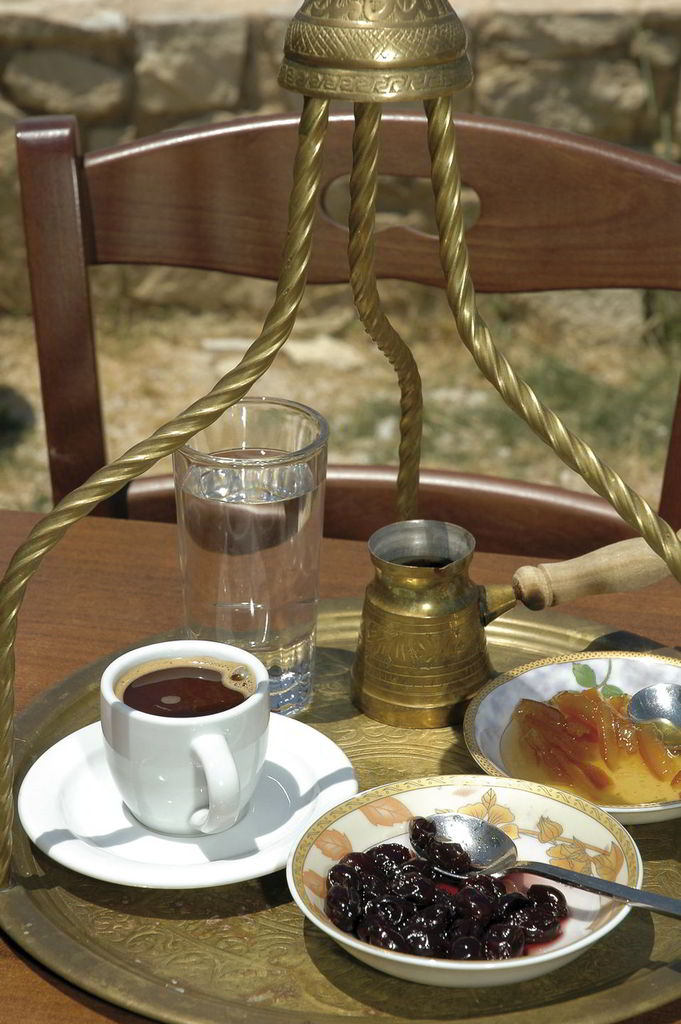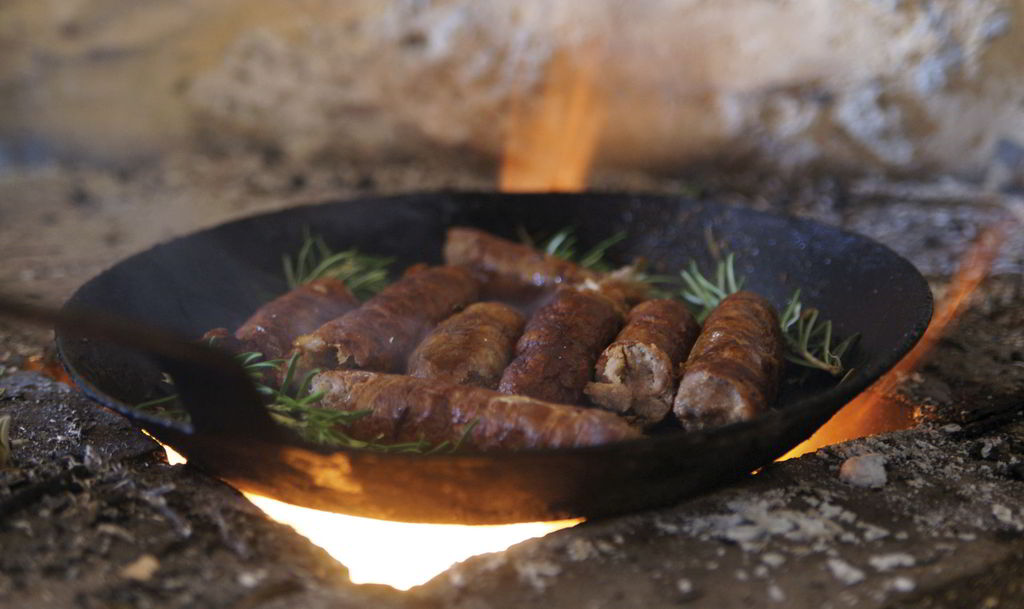Starting from the city of Heráklion, follow the road to Kroussónas and make your first stop at Ágios Mýronas, a beautiful traditional village where the local women’s rural cooperative gives you an opportunity to see and become acquainted with the way local delicacies and confectionery are prepared.
Carrying on southwards, you come across Káto Asítes where you may stop to rest at the church of Ágios Geórgios Gorgolaínis, in a lush location. If you’d like to experience the world of wine, visit the village winery and if your desire is to sample the local products and tastes, swing by the women’s cooperative. Here you will find authentic Cretan food and traditional dishes, such as meat plates cooked in a wood-burning stove, pasta with anthótyro, sfougáto with hórta (greens), Cretan sausage, asitianés agnópites, etc. Going back on the Agía Varvára-Ágios Mýronas road, you reach Áno Asítes that sport several sights worth seeing, including the Nychteridóspilio (Bat-cave), one of the four most important caverns of Mount Psilorítis containing bat nests and the imposing ravine of; Agios Charálampos, which is crossed by the E4 European Long Distance Path.
Continuing to the south-west, you will go through the village of Kerásia with its winery which you may visit and afterwards you will come across Veneráto, where it is worthwhile to visit the Palianí Monastery and its museum, where you may admire religious icons, sacred relics and books of great historical and archaeological value.
Carrying on to the north, you shall meet the village of Dafnés, which is celebrated for the production of high-quality wine (PDO), where you may visit the local winery and learn everything about the wine-making procedure and taste delectable wines.
Moving on to the south, you will come across Ágios Thomás, an impressive mountain village, where it is worth your time to wander around and see the byzantine churches and their unique stone-carved winepresses. Leaving Ágios Thomás, head south-west, towards the village of Gérgeri and visit the small museum of natural history, the watermills and the local women’s cooperative.
The course continues westwards towards Zarós, a settlement renowned for its waters and vegetation, with various agrotourism accommodation infrastructures that make a stop here for a hike almost imperative. Don’t forget to visit the stunning lake Votómou, as well as the Roman Aqueduct ruins, located nearby.
Try the local specialty, which is none other than trout from the lake fish farms. If you’d like to wander in nature and walk, right next to the Zarós lake lies the entrance to the gorge of Ágios Nikólaos, which you will reach after approximately 1.5 hours of hiking on a well-organised path. Leaving Zarós and going on the Górtyna-Zarós provincial road, you will cross the villages of Ampeloúzos, Ágii Déka and Gagáles with their pasta factory and reach Górtyna, in order to visit the archaeological site.
Afterwards, head to Loúres; cross the Ágios Thomás - Loúres provincial road, go past the settlements of Kastélli, Voriás, Madé, Charáki and through the Melidonochóri - Moní Epanosifíou provincial road to reach Metaxochóri, where its worth your while to visit the Epanosífis Monastery and have a rakí at one of the village’s traditional cafés. After that, move on to the north, on the Knossós-Chárakas provincial road, until you come to Choudétsi.

